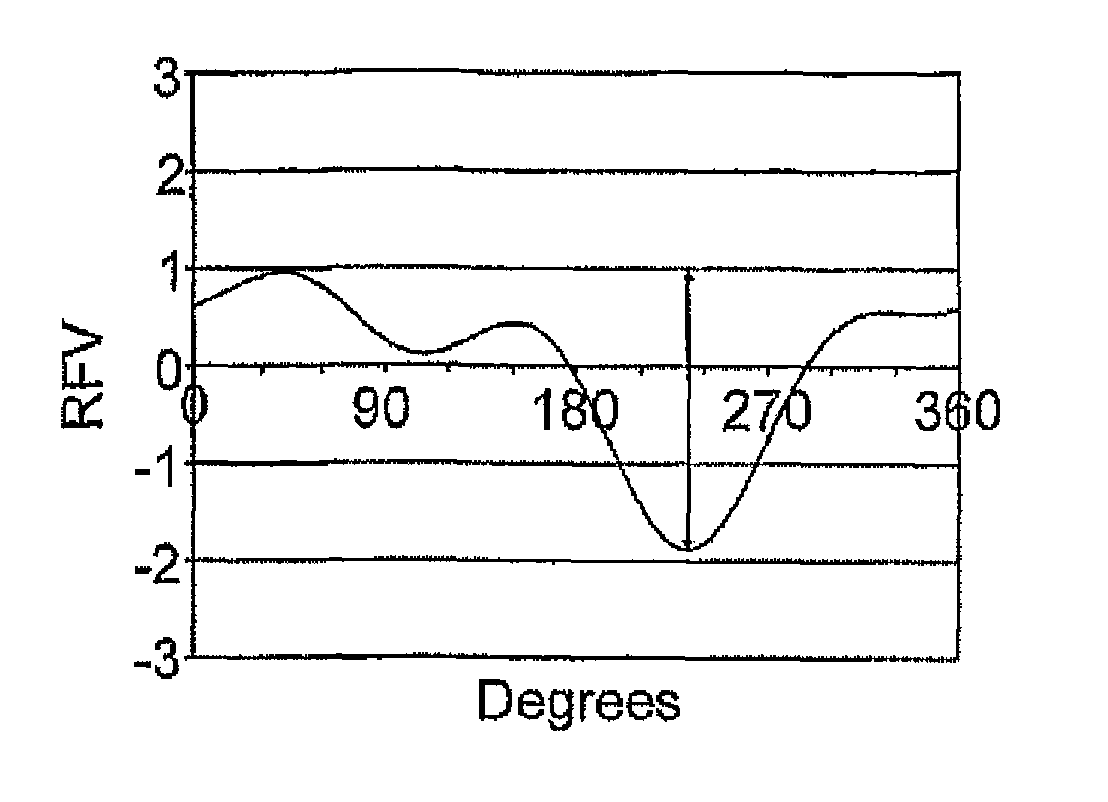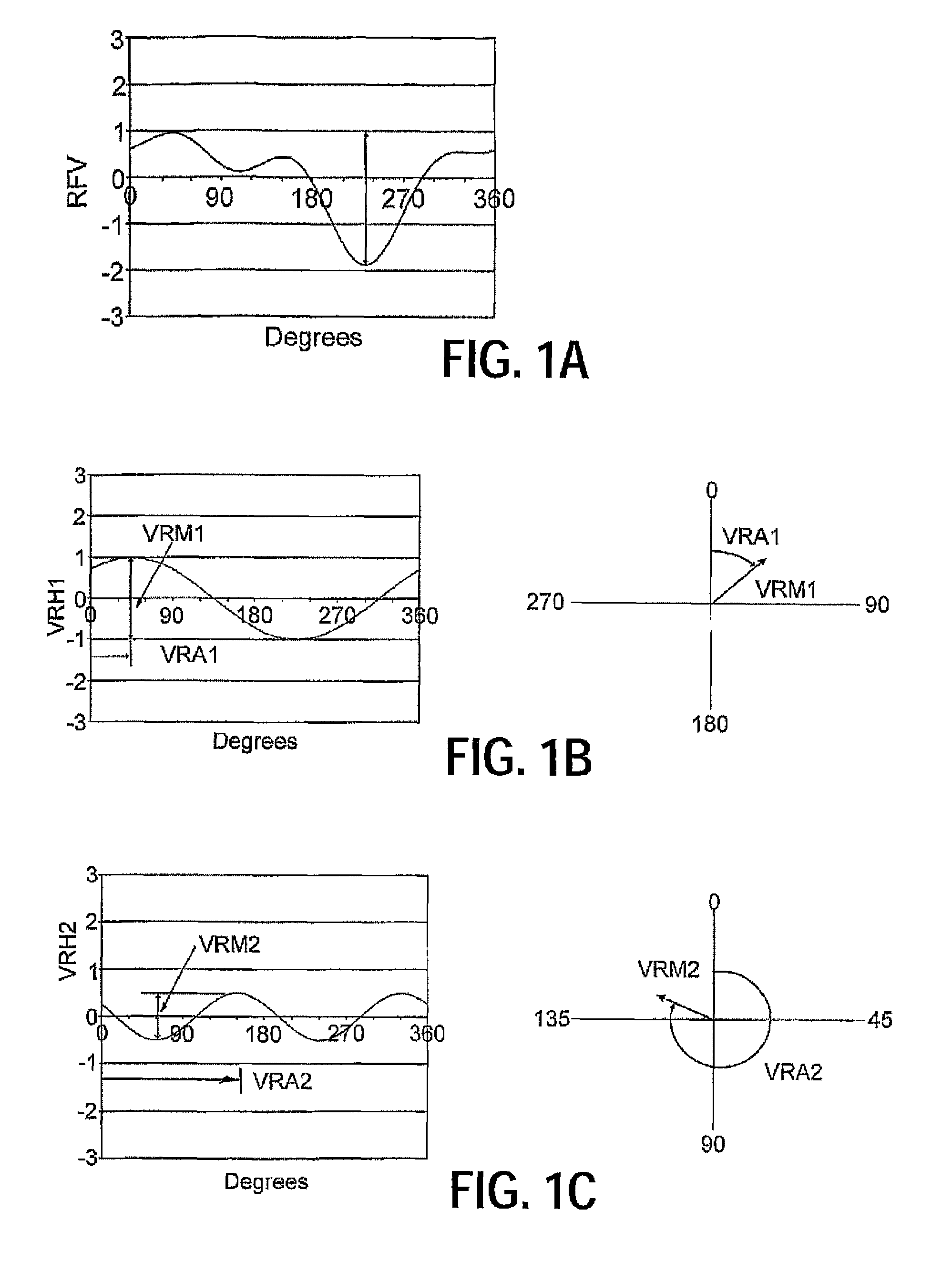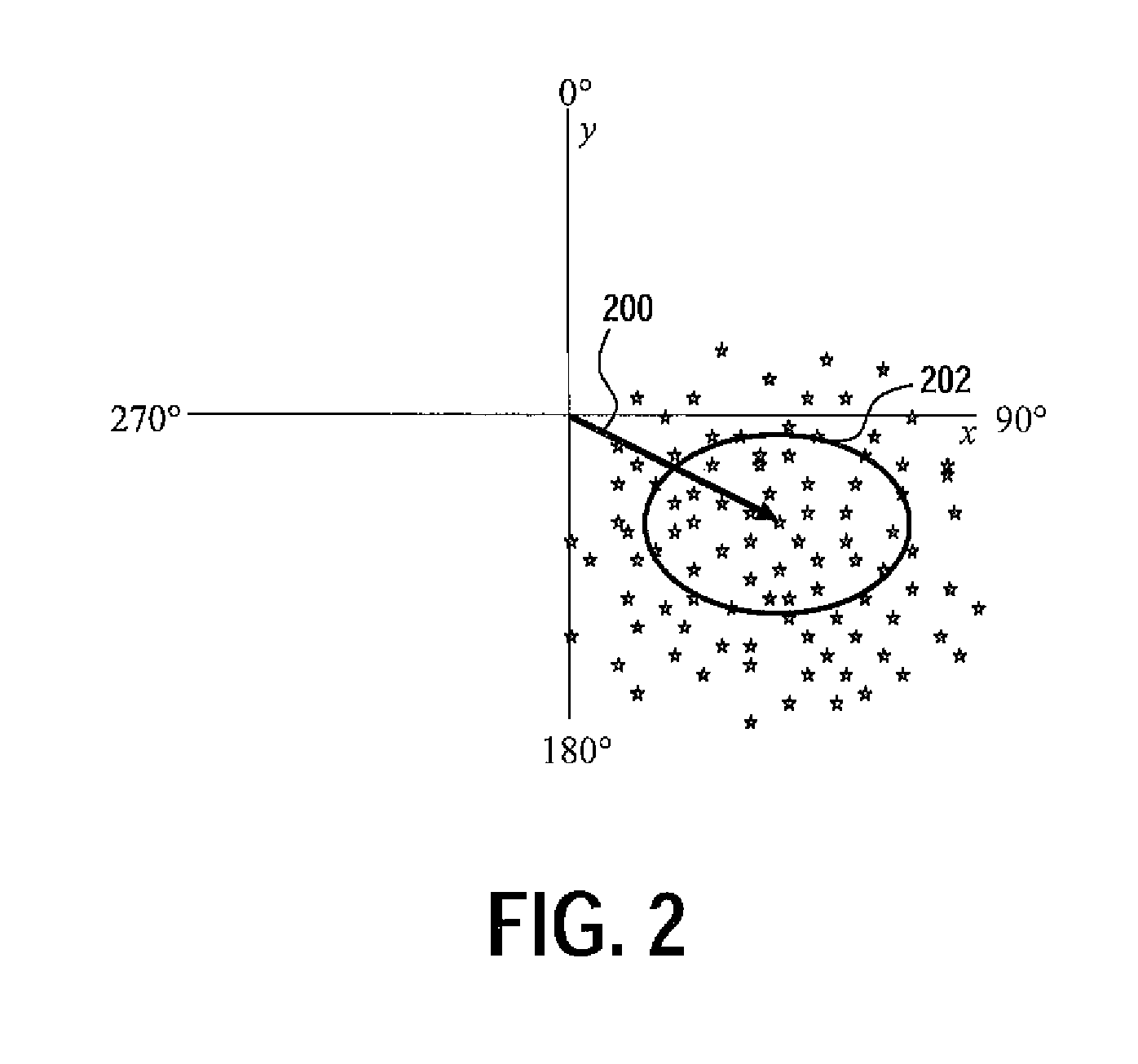Tire uniformity through identification of process signatures
a process signature and uniformity technology, applied in the field of tires, can solve the problems of tire non-uniformity, tire non-uniformity is important, and the non-uniformity present in the tire structure produces periodic varying forces, so as to improve the uniformity, reduce the combined average magnitude of tire and process effects, and optimize the angular location of components contributing to tire harmonies
- Summary
- Abstract
- Description
- Claims
- Application Information
AI Technical Summary
Benefits of technology
Problems solved by technology
Method used
Image
Examples
example
[0081]To better appreciate the process illustrated in FIG. 6 and described above, a numerical example of process effect evaluation is presented based on simulated results. The results below provide simulated data (i.e., test results for hypothetical tires), but exemplify the types of improvements in uniformity achieved from applying the subject analysis to actual manufactured tires. Table 1 below provides a set of simulated uniformity waveform data where radial force (VR) is measured for n=5 tires having some known manufacturing order. For simplicity, the number of data points measured in step 602 around the circumference of each tire is x=4.
[0082]A candidate process effect is identified in step 606 as an out-of-round roller with a circumference that is 1.25 times the circumference of the tire on which it is being used. Steps 602 and 604 involve collecting the measurement data and stringing it together into one long waveform plotted using the data in Table 1.
[0083]
TABLE 1Simulated M...
PUM
| Property | Measurement | Unit |
|---|---|---|
| length | aaaaa | aaaaa |
| length | aaaaa | aaaaa |
| frequency | aaaaa | aaaaa |
Abstract
Description
Claims
Application Information
 Login to View More
Login to View More - R&D
- Intellectual Property
- Life Sciences
- Materials
- Tech Scout
- Unparalleled Data Quality
- Higher Quality Content
- 60% Fewer Hallucinations
Browse by: Latest US Patents, China's latest patents, Technical Efficacy Thesaurus, Application Domain, Technology Topic, Popular Technical Reports.
© 2025 PatSnap. All rights reserved.Legal|Privacy policy|Modern Slavery Act Transparency Statement|Sitemap|About US| Contact US: help@patsnap.com



